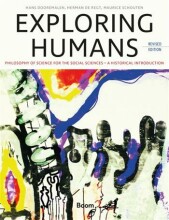Bacon, Descartes Britse Empiristen - Copernicus, Bacon, Galilei and Newton - Scientific Revolution
4 important questions on Bacon, Descartes Britse Empiristen - Copernicus, Bacon, Galilei and Newton - Scientific Revolution
"Through observations astronomers could refute many ideas handed down by tradition and/or religion'".
Which four astronomers famously found answers that could refute such ideas during the scientific revolution?
- Nicolaus Copernicus (1473-1543) concluded that the earth orbits the sun rather than the other way around.
- Johannes Kepler (1571-1630) found out that planets do not orbit the sun in perfect circles.
- Galileo Galilei (1564 - 1642): The sun and the moon are not smooth and thus not perfect.
- Isaac Newton (1642-1727) presented natural laws of mechanics that pertained to all bodies, apples as well as planets.
What do we call the Scientific Revolution and in which centuries did it take place?
- The Scientific Revolution is a time period where a new view of nature emerged that replaced the Greek view that had dominated science for over 2,000 years. This led to a lot of new scientific discoveries.
- It took place during the 16th and 17th centuries (aproximately 1400-1690)
What are the 3 major characteristics of the Scientific Revolution?
- Commitment to observations and experiments.
- The application of universal mechanics (i.e., The universe is seen as a clockwork rather than an anthropomorphic or animated entity).
- The application of universal mathematics (gave a detailed description (and prediction) of regular mechanical principles like laws of nature and forces).
- Higher grades + faster learning
- Never study anything twice
- 100% sure, 100% understanding
'The Scientific Revolution started the demystification of the world'
What is meant with this statement?
The question on the page originate from the summary of the following study material:
- A unique study and practice tool
- Never study anything twice again
- Get the grades you hope for
- 100% sure, 100% understanding
































